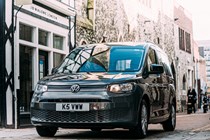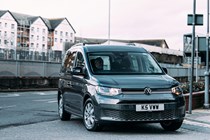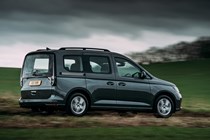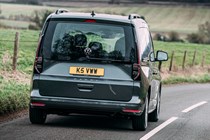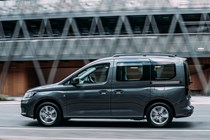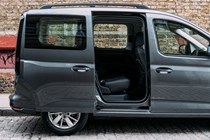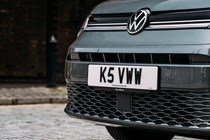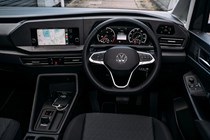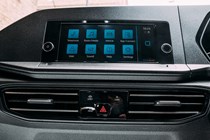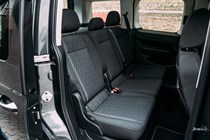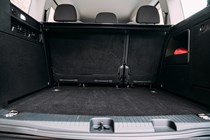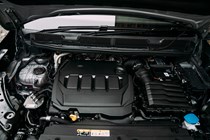
Volkswagen Caddy long-term test
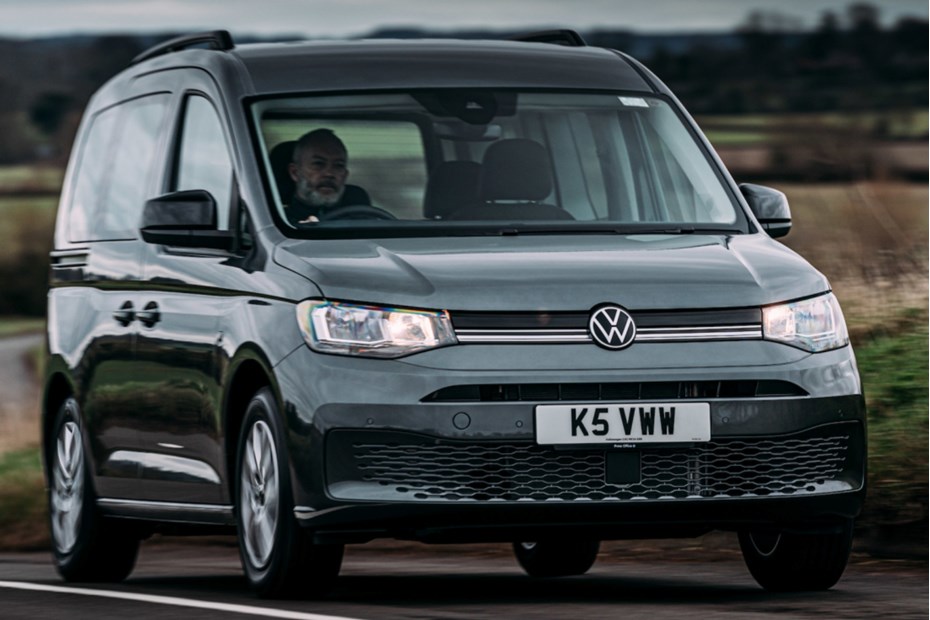
A van-based MPV surely offers the perfect blend of practicality and comfort for family or hobby transport, but the VW Caddy Life is actually based on a car. Does this give it an extra edge over the competition or compromise the interior space and loading capability? Adam Binnie and his growing family is putting one to the ultimate test.
Update 1: Welcome
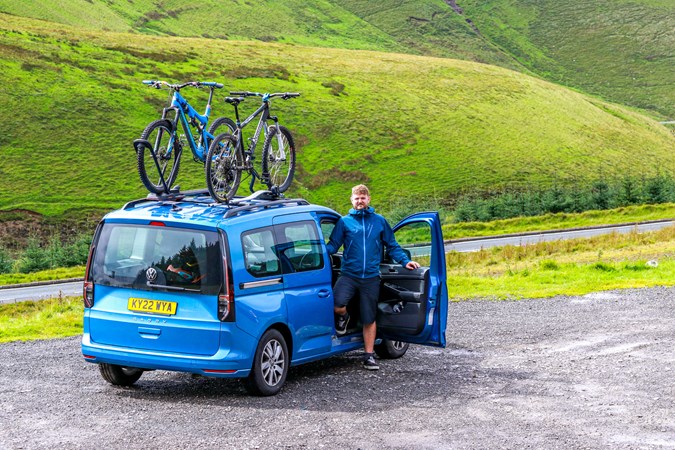
All aboard the VW Caddy Life SWB 1.5 TSI 114PS 7spd DSG
The arrival of the VW Caddy Life has caused much platform-based confusion in my house, particularly among the younger family members.
Distraught by the departure of ‘Gary’, the big green VW Transporter Kombi that we ran for the six months previously, my kids were keen to understand whether its replacement was a van or a car.
In truth it’s a bit of both, with a larger leaning towards car than my previous long termer, which was very simply a van with a bench seat installed in the load bay.
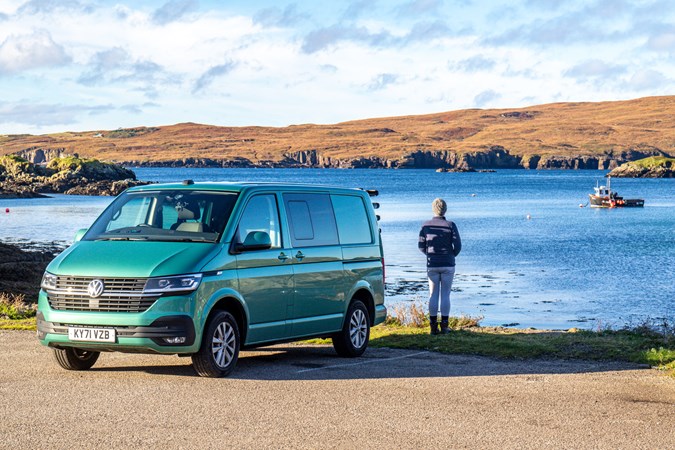
I’ve explained the concept of the van-based MPV to them (like any good father) but the Caddy doesn’t really fit that description, because even in its most basic commercial form, it’s actually based on car underpinnings, with a van body plonked on top.
This MPV variant then adds a load of car stuff into the mix – more seats, carpets, windows, and trim panels to tie it all together. So, my kids have named it Dexter the car-van-car, for reasons that completely escape me, but there we are.
Whatever its origin, the fact it shares a platform with the VW Golf is good news because it means decent handling and a modern interior, right off the shelf. This is car that does van things, rather than the other way around.
In function it is very reminiscent of the VW Touran I had about five years ago, with a big, boxy outline, and plenty of passenger and luggage space. Except that was a car, and one ultimately compromised by having two extra seats in the boot.
.jpg)
The Caddy Life has no such complications – it’s a five-seater in standard form unless you pick the Maxi, which has a longer wheelbase and seating for seven. That suits me fine because I rarely need to transport more than four people, and I do very frequently like to put bikes in the boot.
It is both smaller and more car-like than the Transporter I had previously and that means potentially having to make considerations about how much we pile into it. All those luxuries in the cabin (like rear passenger door pockets) take up interior space, of which there is already less, plus the abundance of carpet and trim everywhere means it won’t be quite as wipe-clean. But in all honesty I used to clean the Transporter with a leaf blower.
In truth I rarely used the Transporter’s load space to its full potential – lots of other people on the Parkers team certainly did – but I can only think of three or four occasions in six months where we packed it out. But on those occasions, it was absolutely invaluable.
Really it was just lovely to know we had all that space, like knowing the depth of performance a Bentley V12 holds in reserve, you know you’ll always have ample. But that potential comes with many compromises. From the small things like the interior tech being a generation or two behind the Caddy’s, to the quite large, like the overall size of the thing.
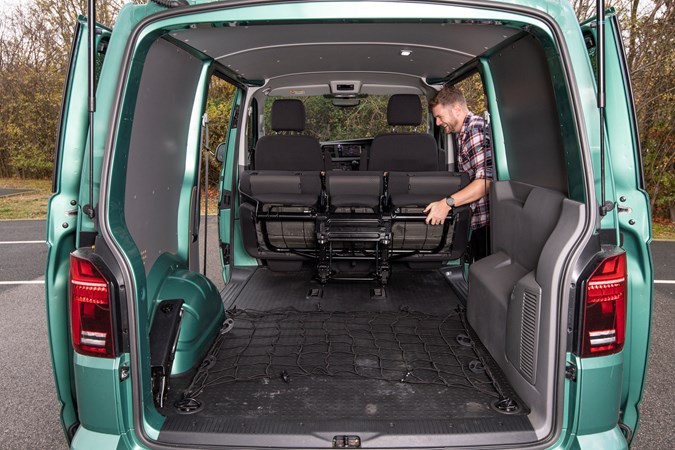
Also, because it was an actual van (albeit one with extra seats) it meant doing lower van speed limits. I know it’s only ten miles per hour, but it’s one more thing to remember on a long drive, and frankly a bit of an annoyance. It was also quite loud in the cabin.
So the Caddy Life is something of a Goldilocks’ family car – all the luggage space you realistically need weighed up against a easy-to-park footprint and comfier, more up-to-date interior. I’ve been really impressed with it so far, as a family shuttle and hobby workhorse it’s very easy to live with.
We’ll dive into spec and options in a later update but for now it’s worth pointing out this is the 1.5-litre petrol with DSG automatic gearbox, costing £31,354 in its basic form, rising to £37,048 with the extras we’ve got fitted. That’s £10,000 less than the Transporter, which is a chunk of cash.
I’ll try not to turn this into six updates of comparison with that larger van, but I can’t promise I won’t mention it again, because it fit so well into our lives (if not into tight parking spaces).
Update 2: Spec
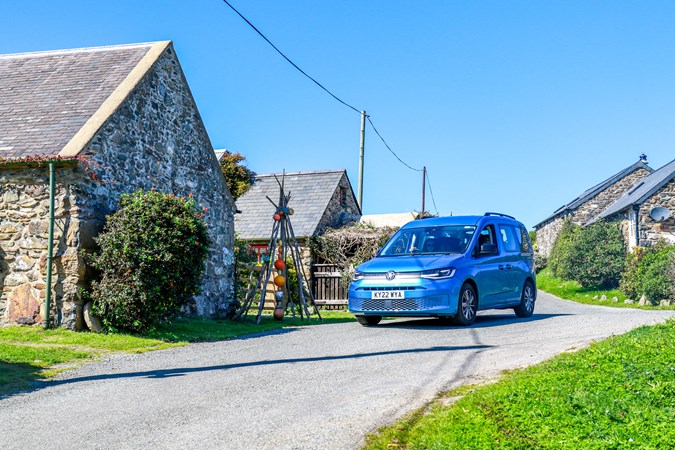
What are the different Caddy variants and which have we got here?
Let’s talk spec sheet stuff now so we’ve got it covered early doors. My long termer is the short-wheelbase variant which means it has five seats, and there is a longer one with seven seats called the Caddy Maxi.
To confuse matters you can spec seven seats in the short wheelbase van or remove two from the Caddy Maxi to make five, if you need more boot space. But let’s ignore that for now.
Both Caddy and Maxi are available in two trims – either the base (which doesn’t have a name) or the top-tier Life spec, like we’ve got here. Upgrading costs about £4,000 depending on engine choice, and if you’re running this as a family car, I think it’s worth it.
The most obvious external additions are the roof rails (handy) and the LED rear lights, which look a lot more technical, plus the fancier wheels. You also get the option of larger 17- and 18-inch alloys if you want them, unlike the base trim.
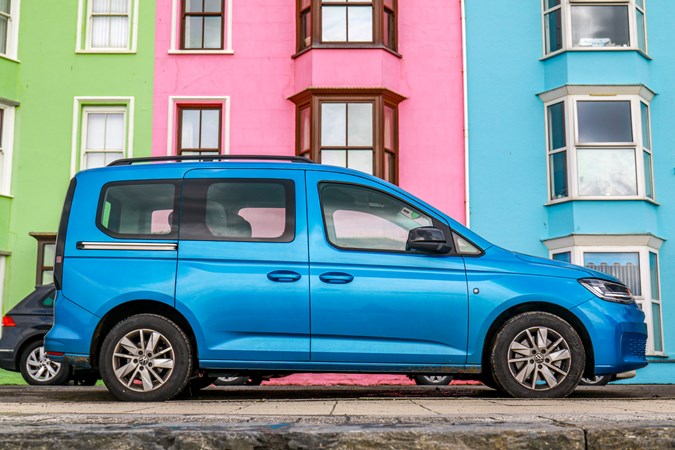
More subtle is the fact you can only have the petrol engine and DSG automatic gearbox like I’ve got on the Life variant, so that’s worth bearing in mind if you want that particular combo (spoiler alert, you probably do).
Nice to have are the power-folding exterior mirrors that tuck away when you lock the van (unlike the Transporter!), and larger 8.25-inch infotainment screen, while the front and rear parking sensors are pretty much essential on a large vehicle (especially one filled with noisy children while you’re rushing to Brownies).
The stereo has six speakers and offers much better-quality sound than the one in the Transporter, which seemingly only had speakers in front, meaning nobody in the rear could hear it. This became an issue any time we went on a long drive and wanted to listen to an audiobook. Which is every long drive when you have small kids.
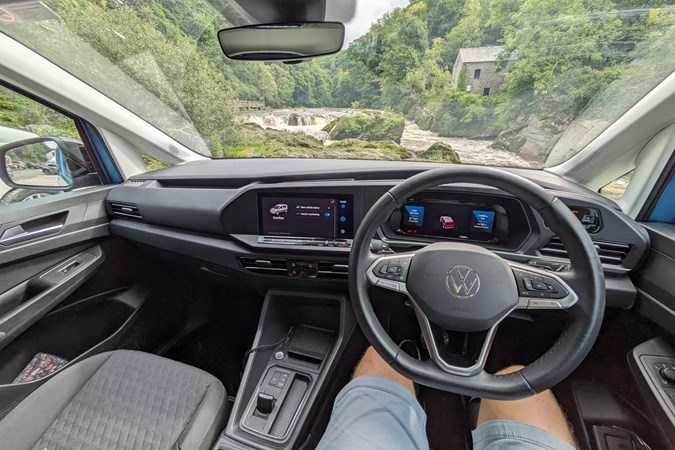
In terms of safety kit, the Caddy Life being based on the same underpinnings as the latest VW Golf benefits from the same sort of equipment, too. Namely:
- Autonomous emergency braking
- Lane assist
- Automatic post- collision braking
- Front driver and passenger airbags plus curtain airbags front and rear
- Electrically operated child safety lock
Safety is likely to be at or near the top of most family car buyer shopping lists and the Caddy Life features a good collection of passive and active tech – some things that will mitigate or prevent a crash and others that will help protect you if the worst does happen.
From a convenience perspective I find the rear door safety lock button enormously useful because you can activate or deactivate it from the driver’s seat, even while on the move. My kids find the rear sliding doors much easier to open than in the Transporter, which is a mixed blessing.
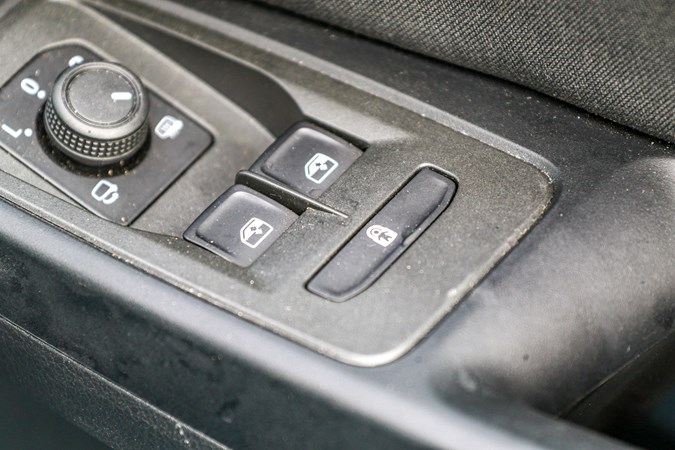
They can get out at the swimming pool but in theory could also do the same on the M25. Being able to turn the safety lock back on if I’ve deactivated it to give my mates a lift is a huge help. Or vice versa.
I’ve also got a load of options fitted to this car too. Some will be quite personal – I could live without the rear-view camera (£288) because the rear window is huge and I’ve got parking sensors, but it might be a handy gadget for you.
Same for the digital cockpit (£489) which looks great but is only really useful for its second map view – if you use the VW navigation system you can have an overview map on the main screen for your passengers (no more are-we-there-yet) and a zoomed in turn-by-turn on the digital dash for you. But if you use Android Auto the directions only show on the main screen anyway, so not really worth it for us.
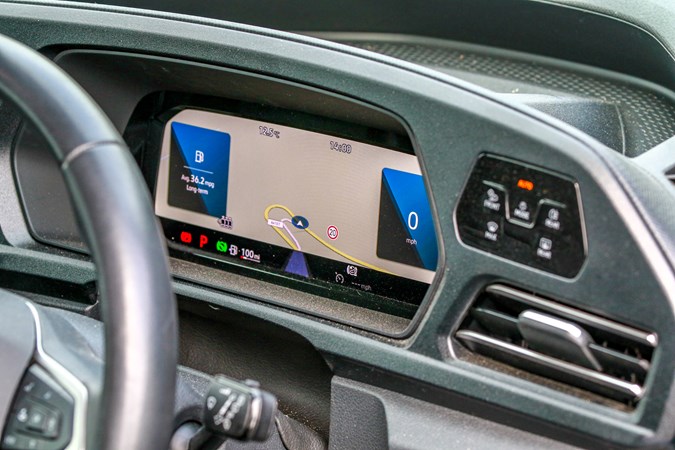
Some things seem like they should be standard anyway – the £120 auto-dimming rear view mirror, for example, and keyless go (£138) which is basically just a starter button. You still have to lock and unlock the doors using the key. Finally, the floor mats are £90 – but surely you could haggle for a set of those.
Other options don’t come with everything you’d expect – I’ve got the brilliant LED headlamps with poor weather and cornering lights, but the automatic high beams are an additional £162. If you want one thing, you’ll probably want the other, right? Seems odd to not offer it as a single package.
The winter package (£540) gets you heated seats, exterior mirrors and washer nozzles and will seem very useful when it’s cold, but not so much in July. Adaptive cruise would be nice too (but that’s £708) and I think I’d take that over the Costa Azul paint (£636), but again, that’s probably a personal preference.
Last but not least is the Discover Pro navigation system with its 10-inch colour touchscreen, costing £2,064, which is a lot of money. It does make the interior look a lot more modern and the sat nav directions are super colourful and contrasty. Most of the car’s controls (things like air conditioning and even the stereo volume) have been migrated to the screen, and this option adds a big slider on the dashboard to adjust them.
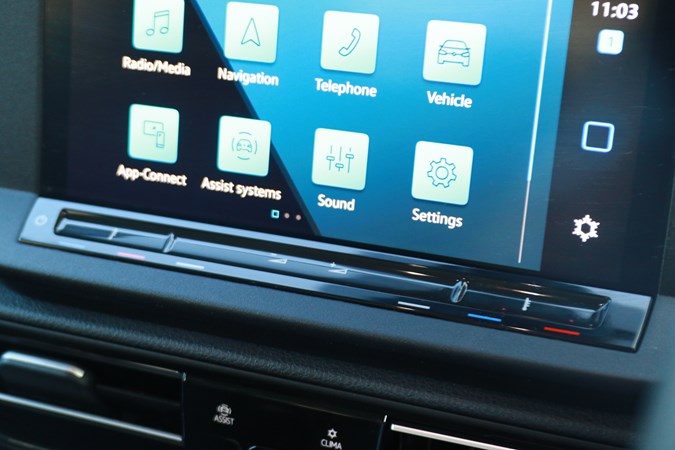
I’ve used this in other cars and have gotten used to it, but I might have to revisit this opinion later on. Despite costing nearly £40,000 the Caddy Life has manual air conditioning and I feel like the Discover Pro system works much better with automatic climate control, because you can set it and forget about it.
This having manual air con, you have to adjust it reasonably frequently when it’s too hot or cold, and this requires jabbing at the touchscreen, pausing, adjusting the temperature or fan speed, and then pressing another button to bring up whatever you were looking at before.
Sounds like a niche problem, but these are additional button presses you don’t need to worry about with physical temperature and fan controls. Am I just getting old? Yes. But also, it’s quite annoying.
Update 3: Practicality
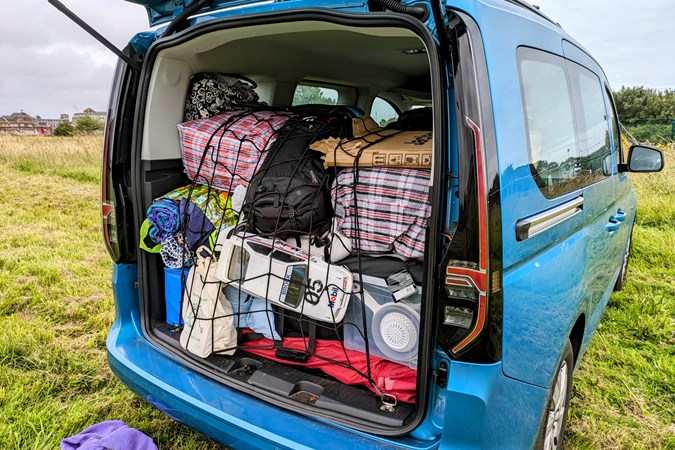
An area where the Caddy should defeat all other family transport options – but does it?
Let’s face it, you’re buying a VW Caddy Life because you need interior space, so it makes sense to spend a bit of time looking at what this car offers and how it stacks up against rivals.
You’ll have no doubt spotted the roof rails and bike carriers fitted to my long termer – I’m going to talk about cycling and other hobbies in a later update so we can just focus on the fundamentals in this one.
Being based on a van (well a car chassis with a van plonked on top as we’ve already covered) you won’t be surprised to hear that the Caddy is a very practical vehicle, with a huge 1,213 litre boot in this model, and 1,720 litres in the longer wheelbase Maxi.
It’s flexible too, because as well as being able to fold the rear seats flat, you can tip them forward to unlock even more room, or just remove them entirely. This gives you a flat floor measuring just under two metres in length, and 2,556 litres of space, or 3,105 in the Maxi.
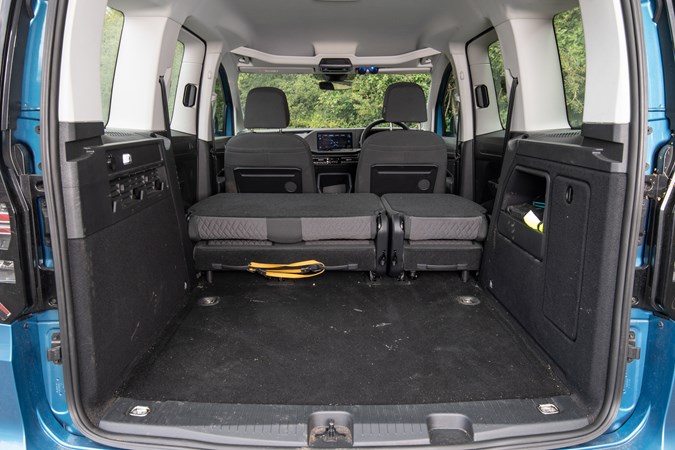
Both the long and short wheelbase models have the option of seven seats – with all of these up the bootspace in the standard Caddy drops to 191 litres, or 446 litres in the Maxi. If you regularly use all seven seats, the Maxi is definitely the one to have, or get the standard wheelbase and fit a roofbox.
Whichever way you slice it though that is a substantial load space. The passenger room is generous too, with a lofty roof that even then tallest of occupants will fit under with ease. In the front some of that head room is taken up by a big storage bin where you can put (and lose) all sort of things, up to the thickness of an old telephone directory. I fit five takeaway containers’ worth of pie in there, for reference.
I will say this though, the fact the Caddy Life is a smaller vehicle than the Transporter Kombi I ran previously does mean some more compromise. In the larger van we could basically pack whatever we wanted and not have to worry about whether it would fit, without affecting the rear passenger space even slightly. My kids were so far apart the couldn’t reach each other, and their feet seemed to be in a different postcode to the back of my chair.
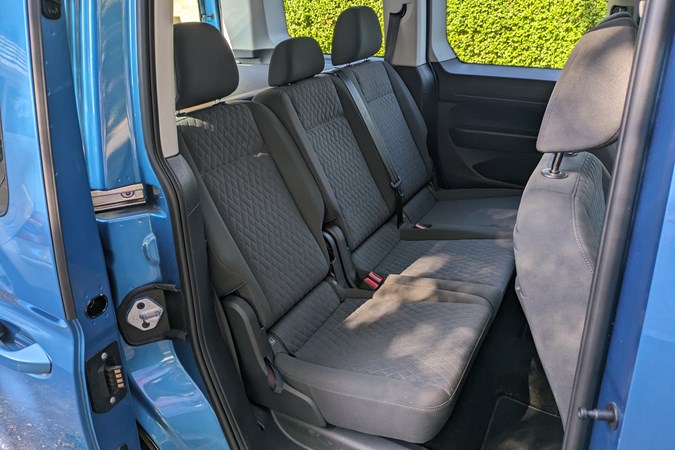
In the Caddy Life we have to be a bit more selective in what we put in the boot, particularly if we’ve got bikes to transport too, and the rear passenger legroom is more what you’d find in a car, i.e, my youngest is able to kick me in the back repeatedly in the run up to snack time.
Those compromises are weighed up against the benefit of the much smaller footprint of this van, of course, and in normal running conditions I don’t often miss the extra space of the Transporter. But then we’ll go camping or on a trip away and suddenly I find myself reminiscing.
Otherwise the Caddy is a supreme family vehicle – I can put the child locks on remotely, the kids have little fold out tables for picnics for balancing books on (or more likely turning into an impromptu bongo drum), and there are storage compartments everywhere, including two pockets on the back of each seat.
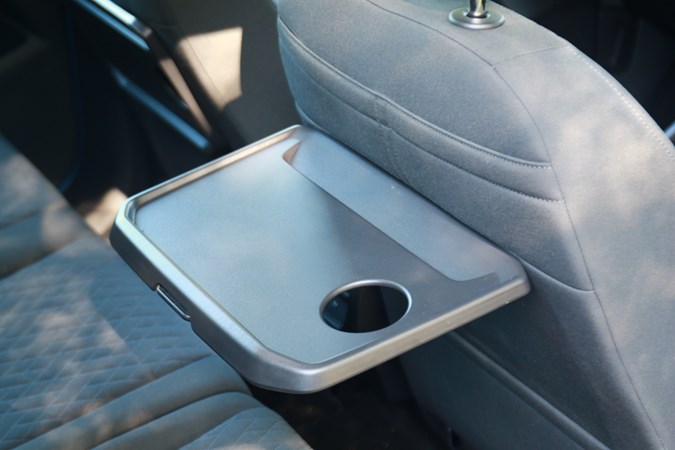
Not only are the door bins huge but the driver’s side actually has a little bin in it, which is very useful. There are drawers under the front seats, two cup holders between driver and passenger, and an underarm storage compartment with armrest.
Tucked away under a flap in the front of the centre console is a wireless phone charger, positioned at an angle so your device doesn’t slide around all over the place. There are also two USB-C sockets if you’re phone won’t charge wirelessly.
The glovebox is actually pretty good too, which isn’t always a given these days, and is capacious enough to store not just the car’s user manual but also an old Canon 70-200L F/4 (not the image stabiliser model though).
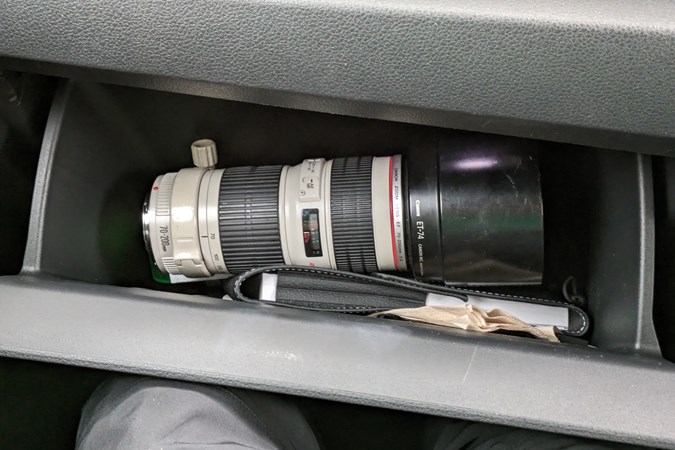
There’s less on offer in the rear, but more than we had in the Transporter – the kids have a door bin each and the backrests of their bench can be individually reclined. This can be used to increase or decrease the bootspace, or more usefully to get the seatback tilted to the right angle for their booster seats.
This van has fixed rear windows, which frankly I wish was the case in all family cars because at no point do your kids need to be dangling limbs into moving air, and the air con does a good enough job of keeping the climate at a comfortable level. Isofix points are found underneath little zipped closures on the two outer seats.
The sliding doors are much lighter and easier to close than in the Transporter, plus you get two as standard in the Caddy Life (you had to spec a second door as an option in the larger van) and honestly these play a huge role in how easy this vehicle is to live with when you’ve got small kids.
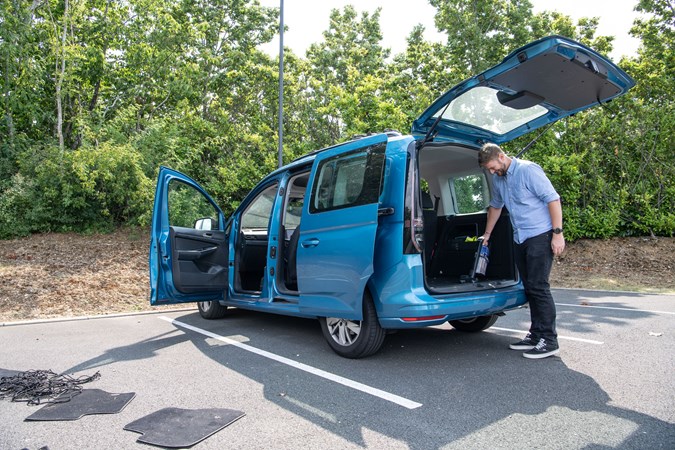
It is a bit harder to keep clean though, behind a car with carpets and other nooks and crannies for stuff to get stuck into. I used to just blow all the dust out of the Transporter with a leaf blower, which isn’t really an option here. That said, the seat upholstery does appear to be hard-wearing and stain resistant. I removed some melted chocolate with nothing but a wet wipe the other day, for example.
If you’re moving from a more conventional car to the Caddy Life really the only difference I can see is the size and weight of the tailgate, because of the tall 1,200mm load height. You need a bit more space behind the car to open it fully, and because it’s massive and I assume quite heavy, the gas struts fire it open at quite a rate of knots.
Otherwise we’re really enjoying our time with the Caddy Life. It’s so easy to live with that it allows you to switch your brain off to anything other than the process of actually driving it.
Update 4: What’s it like to drive?
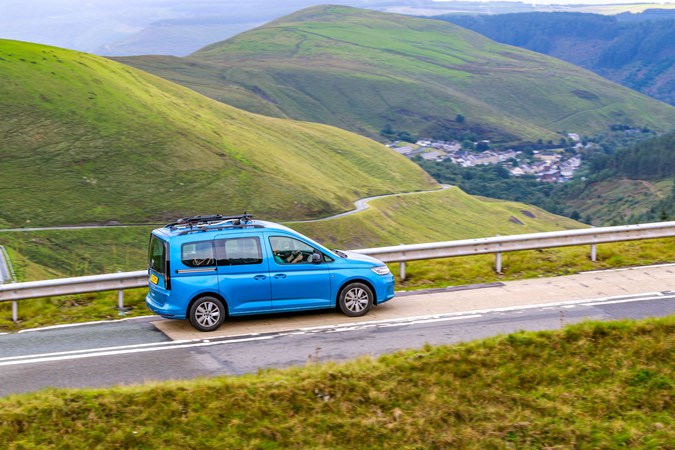
A car like this doesn’t need to win Le Mans but the Caddy manages to over-deliver anyway
Engine performance is definitely an area I’ve found myself less and less bothered by as time goes on, and I can’t decide if that realisation is liberating or depressing.
Where previously I’d have poured over the torque figures and 0-62mph times of the various options in the brochure to find just the right one, these days I’m happy as long as it can get up to motorway speed on the short slip road by the office.
Put simply, there are very few occasions now where it would be desirable to absolutely clog it in a V10 powered supercar. Assuming my kids could even fit, they would immediately be sick, plus there’d be nowhere to put my bike. And as I’ve said countless times before, owning a motorbike has made me much less bothered about driving a fast car.
I suspect this opinion will change again when I’m no long Toddler Uber, but for now the Caddy caters perfectly for this lack of interest in acceleration. There are three engines, and they all go well enough, with 115hp(ish) and manual or auto options.
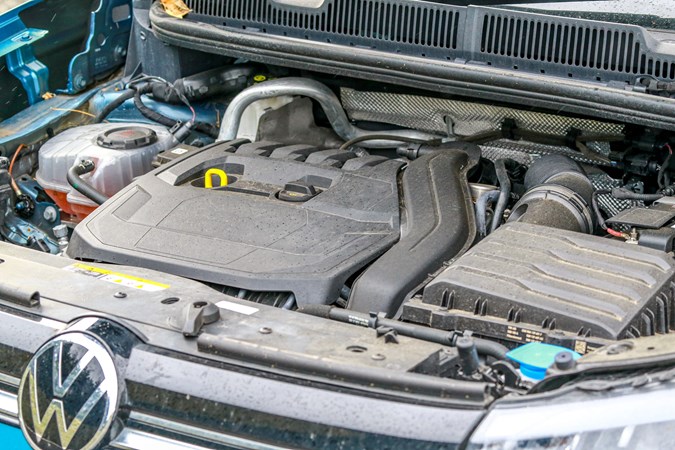
You can choose from two 2.0-litre diesels with 102hp and 122hp (the latter available with all-wheel drive) and then the 1.5-litre petrol I’ve got, which has 114hp and a seven-speed dual-clutch automatic transmission. This initially worried me because I’ve found that gearbox a bit sleepy in previous long termers, particularly ones not exactly overflowing with power. This manifests itself in a reluctance to pull away from a standstill, or hanging onto too high a gear on the move.
Thankfully the Caddy has neither problem – initially I left the gearbox in it’s more decisive S mode because that’s the workaround I’d used before, but after a few weeks I realised it’s perfectly fine in D. It’s quieter too, resisting the urge to rev itself out like it does in S mode.
Looking at my fuel log it does appear to have made a tangible difference to the mpg, which was sitting around 33-34 initially and is now more like 37-38mpg, with regular 400+ mile gaps between fill ups. Either the engine has loosened up, I’m driving more carefully, or the S mode drinks fuel. Maybe it’s all three.
All told the Caddy averaged 35.7mpg in the time I had it, with the lowest being 31mpg, but that was with four bikes on the roof, so probably fair enough.
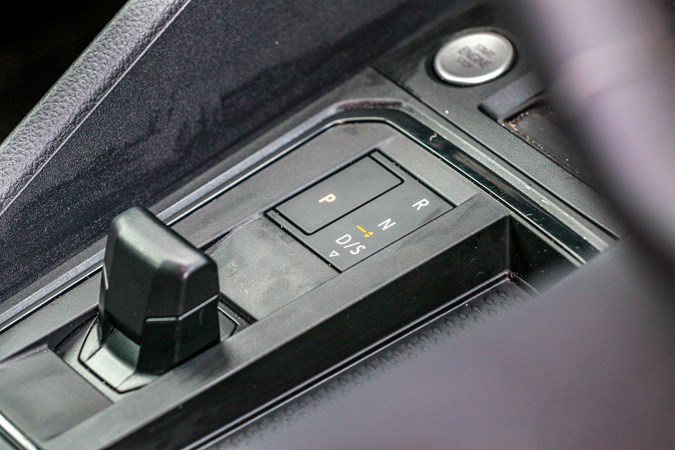
I have been caught out by the start/stop function at junctions a few times, which can sometimes take a couple of seconds to wake up, but you can jog it back on early by nudging the steering wheel.
The regular D setting also gets the benefit of fuel-saving features too, and I can feel the Caddy coasting along down hills or when I’m not really pressing the throttle. I haven’t used the gear shift paddles behind the wheel yet, which is a pretty good sign the gearbox is doing a good job.
I will say this though – there does seem to be a couple of seconds after starting the Caddy up where the gear selector is inactive. If you try and put it into drive straight away nothing happens, so you have to pull the paddle again, which is quite annoying.
Anyway, some actual journalistic analysis is required isn’t it. I reckon the petrol engine I’ve got is the best all-rounder, cheaper to buy and in theory cleaner to run. It’s quite punchy when the car is empty and manages well enough when it’s full of people and stuff. Under normal conditions it’s quiet enough and generally just gets on with the job.
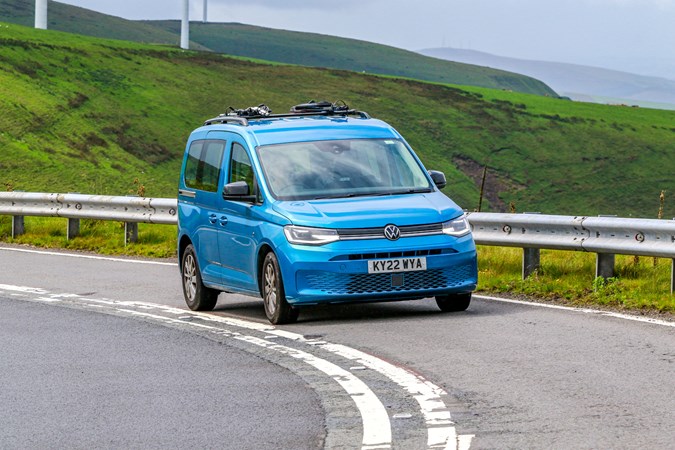
You do notice when the car’s loaded if driving on the motorway, as it gets a bit sluggish at higher speeds. With the cruise control set the gearbox will shuffle around sometimes when faced with an incline, dropping down a cog to regain speed and then shifting back up, over and over.
If you regularly haul heavy loads then the more powerful diesel will be a more suitable option, while the 102hp diesel is probably only best if minimal running costs are your only criteria, or you need a vast tank range – a claimed 597 miles.
Onto more exciting things though, which lie in the handling department. Traditionally there would now follow a paragraph about how the Caddy handles well “for a van” but because it’s based on the eight-generation Golf, the Caddy is pretty good full stop.
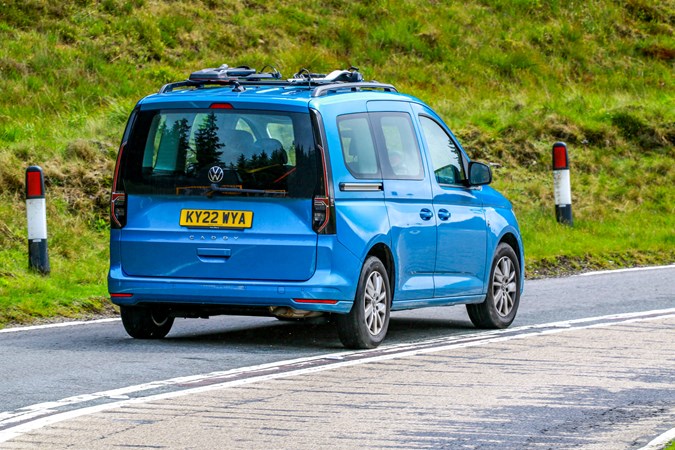
Just to wind that back a bit, it’s worth pointing out that the Caddy is bigger and has a higher centre of gravity than the Golf so it’s not exactly the same to drive, and it’s not the most involving thing in the world, but I’ve been really impressed with the (relative) lack of body roll and particularly by the amount of grip it has.
Neither is what you’d immediately associate as an essential family car trait but anyone who’s had to spotwash vomit from their upholstery due to sloshy side-to-side body control will appreciate a degree of chassis tautness. It’ll lean if you try hard enough, but under normal conditions the Caddy remains admirably level. We used it as a video platform for a CAR magazine film and the videographer even commented on how flat the VW cornered.
Decent grip is desirable from a safety perspective, not because I’m planning to take the Caddy on a track day (well, not a full-sized one, but more on that later) and I’ve been both surprised and delighted by the OEM Giti tyres, which I had no experience of before.
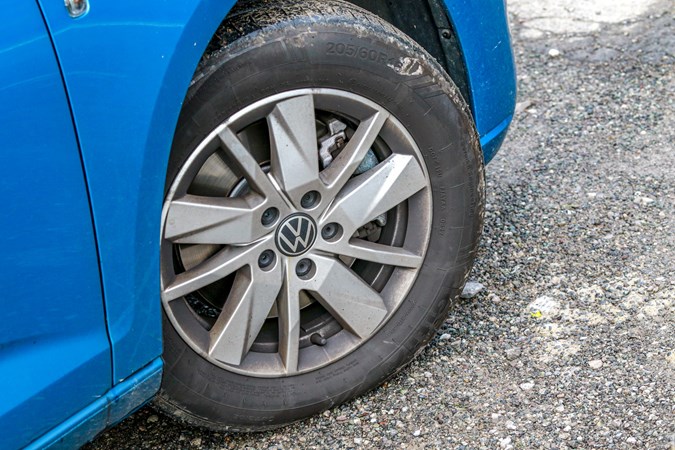
They’ve been great though, with plenty of traction in the dry and wet, and at 10,000ish miles appear to be holding up ok too. Customer reviews I’ve read online are mostly positive with a few complaints about noise and steering feedback, although neither have bothered me. Potentially because there is always something louder in the Caddy (my kids, the roof rack) and very few modern vehicles give you proper steering feel these days anyway.
So on the whole the Caddy’s performance and handling is very fit for purpose – no massive concerns in either department but with plenty of nice surprises along the way.
Update 5: Boot, bikes and beyond
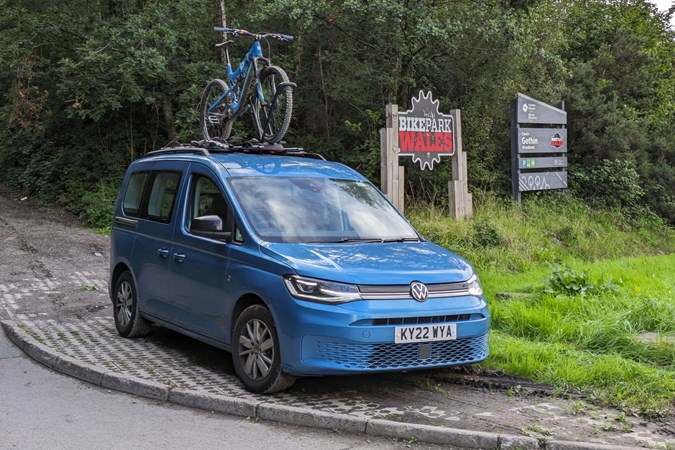
All the various ways we’ve been making use of all of that space in the boot (and roof)
We covered off boot volumes in the previous practicality update but it’s hard to visualise exactly what 1,213 litres looks like in action unless you have a very vivid imagination. So I’m hoping to bring it to life in this update via the medium of my bulky hobbies.
The boot is a big oblong shape with very few intrusions (or none at all really) and the window line is very high, right up by the top of the rear seats, so you can get absolutely loads of stuff in there. There’s a tonneau cover that retracts into a spool but in general I find these just get in the way, so it lives in my garage.
It’s not completely square unless you tip the rear seats so they sit bolt upright, but I’ve found this is incompatible with the high-backed booster seats my kids sit in, so we have to compromise a little on the inclination of the backrests.
On occasions where I don’t have them with me, I can tilt the seats forward and get much more in the boot, like when me and three colleagues went kayaking. Granted they were inflatable boats, but they were still massive, and we also needed space for the bulky buoyancy aids too.
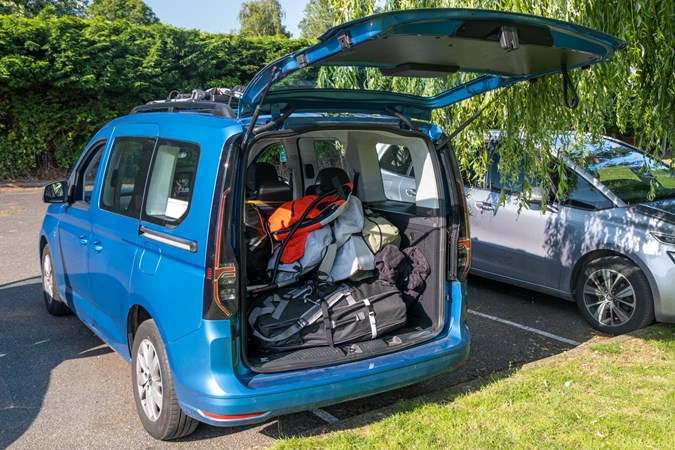
As you can see, for the return to the office we didn’t even pack the kayaks back into their bags very well, and they still fit in the boot with absolutely zero drama.
One thing I do miss though is some sort of bulkhead, either a removable solid one or even the kind that rolls up so you can store it under the boot floor. Without this it’s only really safe to pack the boot up to the top of the rear seats, otherwise stuff will come flying out if you need to brake heavily.
I’ve got round this a bit by attaching a cargo net to the head rest legs, and then stretching it over the items in the boot before securing it to the metal lashing points by the tailgate. There are another pair closer to the seats too so you can secure smaller things from sliding around.
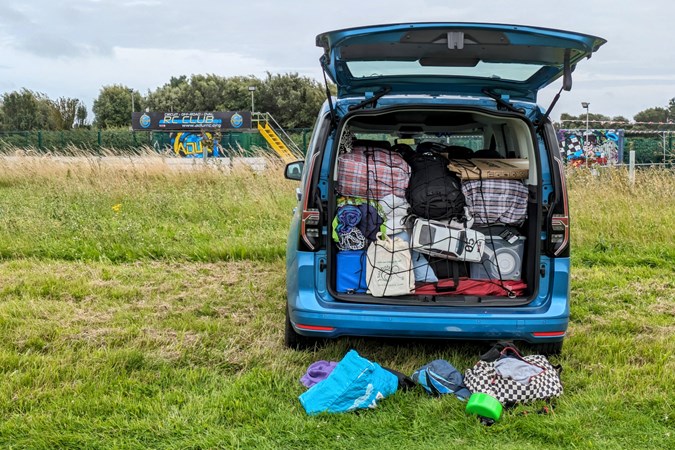
To get the most amount in the boot as possible though the best technique is to pack it quite full, then shut the tailgate, and then continue loading things In over the top of the rear seats. Only trouble is, when you open the tailgate again, quite a lot will fall out on your feet.
I had to employ this technique when we went camping the night before a remote-control car race on the south coast. If you’ve been camping with kids before you’ll know the volume of stuff you need to take for one night is pretty much the same as a fortnight.
The only thing that gets added for a longer trip is another squashy bag of clothes. So the boot was pretty full, and that’s before you factor in all the RC car stuff too.
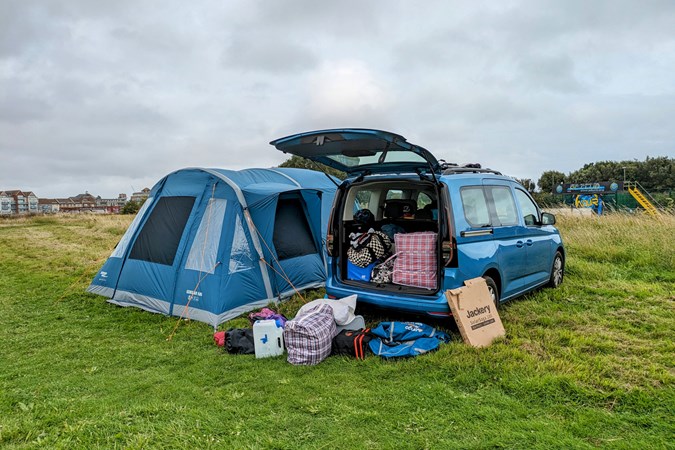
A better solution would be if the glass section opened like it does on a Citroen e-Berlingo. This would also make loading things into the boot when you’re in a tight spot in the car park easier too. The tailgate is massive and needs quite a bit of space behind it to swing open.
This can be quite handy when it rains as it’s a useful size to hide under, especially if you need to get changed after a soggy bike ride and don’t want to get a load of mud inside the car itself.
While we’re taking about that, the big difference between the Caddy and my last Transporter long termer is the ease of which it can carry four people and their bikes. In the bigger van, all of those things fit inside without much drama at all, in the Caddy you can only really get one in the boot and that’s if you drop one of the rear seats.
This means making use of the roof rails and handily VW will sell you a pair of horizontal bars for £104.20 that clamp onto them, so you can attach things like bike carriers or a roofbox. They’re sit level with the longitudinal roof rails and have an aero profile, so they’re super quiet on their own.
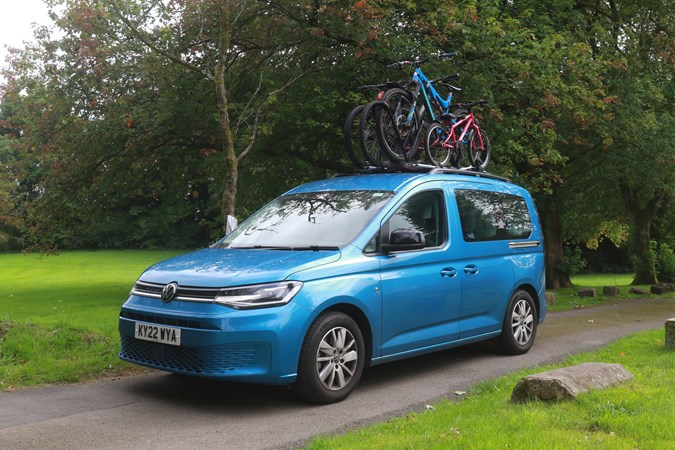
Of course they very quickly got filled up with bike carriers, two at first but then an additional pair when my son moved from a 20- to 24-inch wheeled bike, which no longer fit in the boot. The bars have a T-slot running uninterrupted down their length so it’s really easy to install and reposition things.
Installing the bars themselves is super easy, which in itself is a bit concerning because if they’re easy to get on, they’re easy for someone else to get off. They’re basically secured with an allen bolt that runs through the foot and into a plate underneath the roof rail, and it’s not locked on in any way.
This is worth looking into before purchasing if security is a concern for you – I know the barrels on the lockable type aren’t exactly Fort Knox approved but they’re something at least. To be honest, I’d never leave my bike on the roof unattended anyway, locked or not, so I’m not sure it matters.
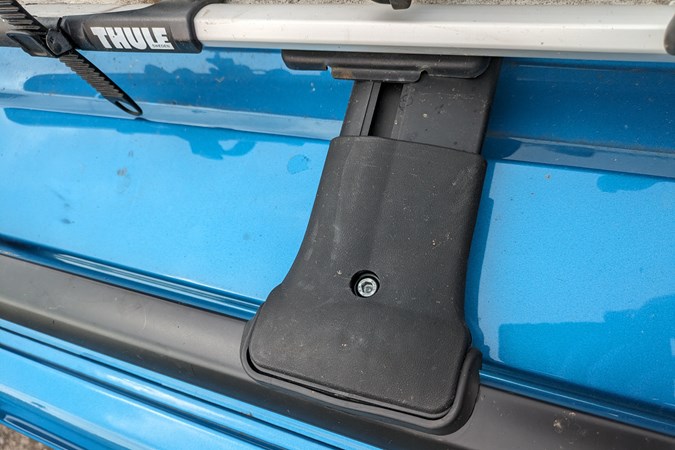
It’s also a bit of a faff getting the feet secured to the rails and I’ve noticed unless you get the bolts torqued up just right a squeak will develop about 20 minutes into your journey.
The Caddy is a taller vehicle so it’s a bit tricky to get heavy mountain bikes on the roof in general, and particularly difficult if you want the two larger bikes to take up them middle positions if you’re a fusspot like me.
You can of course stand on the plastic sill cover but because this is set within the van it’s quite easy to topple backwards if you’re not careful.
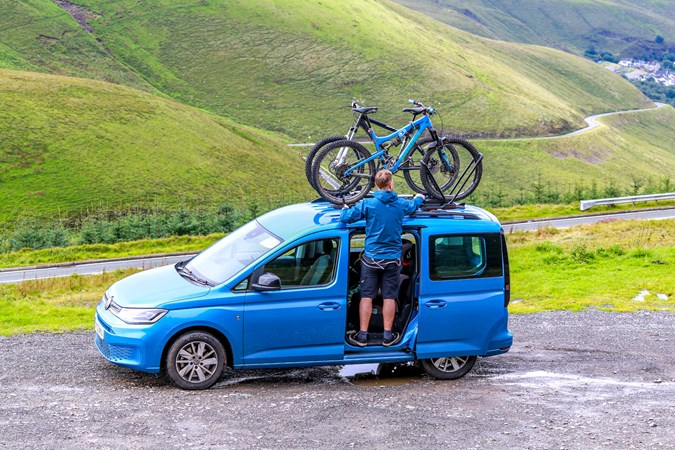
I’ve got two types of bike carrier, the kind that hold onto the frame and another than clamps onto the front wheel. The latter is much better on the Caddy because you can install the bike from either side of the van.
Because the Caddy’s roof isn’t all that long (quite a lot of it forms the sloping section between the flat roof and the windscreen), and the rear door opening finishes quite a bit short of the rear end of the bike carrier, accessing the strap that secures the back wheel is a fair stretch.
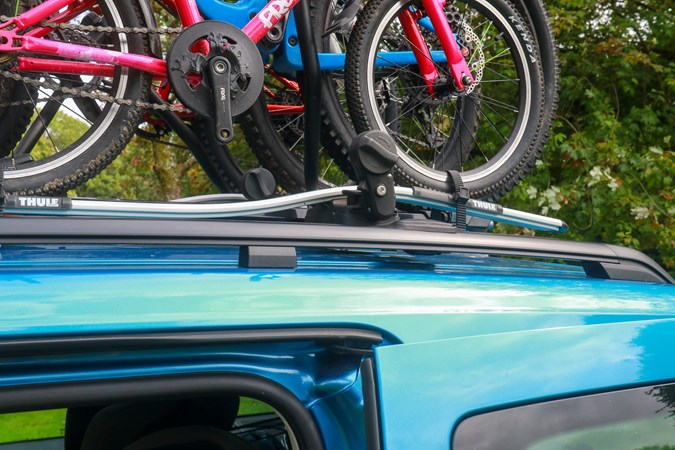
There’s an additional fuel cost to all of this as well of course, and my calculations show an average of 32mpg when I’ve got bikes on the roof, compared to the 36mpg I get otherwise – that’s the equivalent of an extra 43 miles’s worth of fuel.
Really the best solution I found was to take one of my children to Bikepark Wales at a time, with my bike on the roof and theirs in the boot. Then there was zero faffing around trying to get multiple bikes up in the air – until we got onto one of the jump lines, of course.
My daughter’s 18-inch wheels go in with no drama, my son’s 24-inch wheels require the single rear seat to be folded forwards, but if there’s only two of us that’s not really a problem. I could take his front wheel off I suppose, but that requires effort.
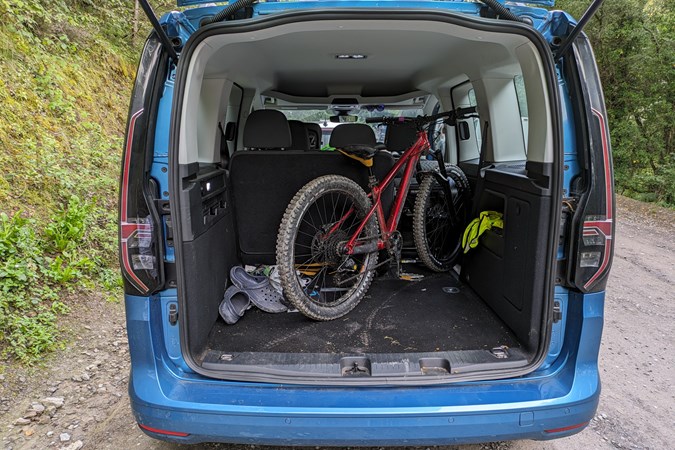
All of this does raise a idea I had early on into this long term journey – why doesn’t the Caddy come with three individual chairs you can remove one-by-one, and failing that, why can’t I bin off the double seat and put a second single side on the left-hand side?
Then I’d have seating for four (the number of people in my family) and a huge corridor down the middle where we could slide bikes or other long and bulky items.
When I asked VW they said no because the legs that secure the outer rear seats aren’t ambidextrous. A missed opportunity if you ask me, and if you see this feature on the facelifted Caddy, you know who to thank.
Update 6: Verdict
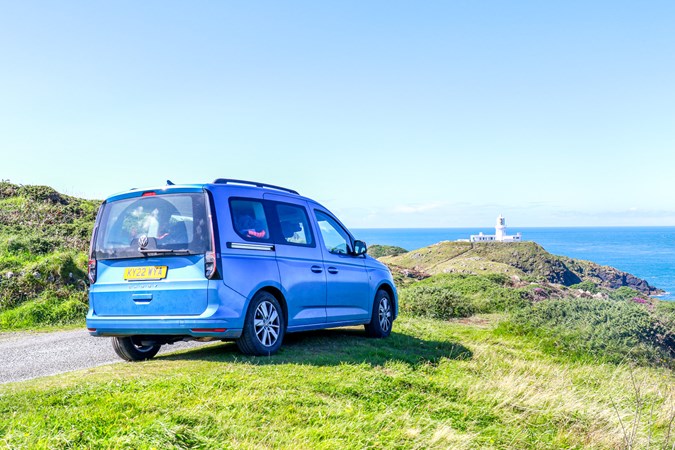
All good things must come to an end, and so the Caddy heads back to VW – but will we miss it?
We started these updates all those miles and months ago with a simple question – Is the VW Caddy a better family van than my old VW Transporter Kombi? Or to put it another way, which VW van is best if you have kids?
Of course, that opens up a whole can of worms, because in reality the Caddy isn’t a van, it’s a car chassis with a van attached, which then gets turned into an MPV.
You’d think that would cause an existential crisis every time you turned the key. Well, pressed the starter button. And my conclusion is that the Caddy is compromised internally in the same way that the Transporter was compromised externally. I will now explain what on earth that means.
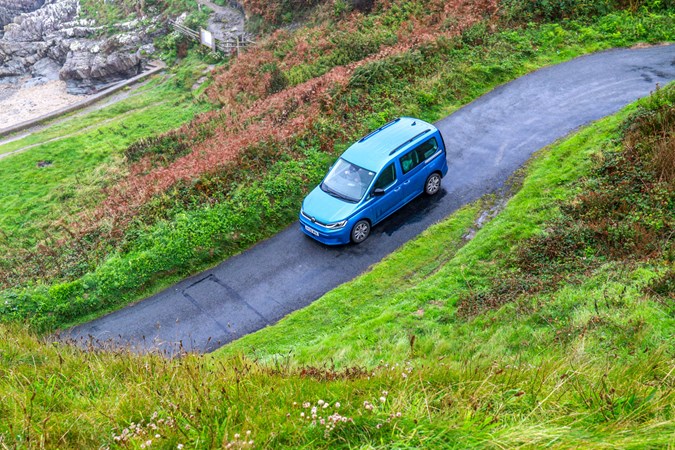
The Transporter was a large vehicle and that was its main problem – unwieldiness in car parks multistorey or otherwise, and a constant concern when squeezing under height restrictors. But it made up for it by being enormous on the inside too.
That extra space might have only been useful 10% of the time, but during those minority minutes the usefulness was off the charts. So much so that I think it was worth putting up with the challenges of the external dimensions for the other 90%.
The Caddy managed to be just as useful during normal running conditions and a great deal more comfortable, not just the ride and noise levels but thermally too. On a cold morning it took moments to get up to temperature – sometimes I’d arrive at my destination with the Transporter still struggling to fill its vast interior with heat.
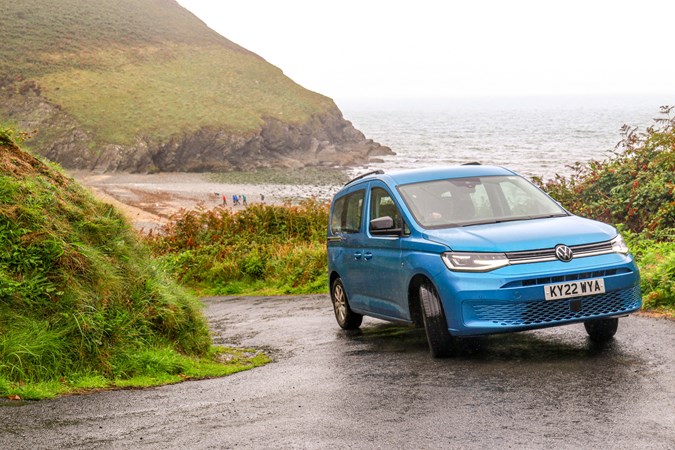
Externally the Caddy looks a lot bigger than a car but in reality the majority of its extra volume comes from how tall it is, with a footprint broadly similar to the Golf it’s based upon. That means it’s easy to park and thread down narrow streets.
The thing is, headroom inside a vehicle is useful up to a point and then becomes wasted space – you don’t want to be touching the roofliner but beyond that the advantages diminish. Unless you’re a professional basketball player or have a particularly impressive Mohican haircut.
A boxy profile does of course increase bootspace but you can only pack the Caddy’s luggage compartment so high before it all falls onto your passenger’s heads, because there’s no bulkhead separating the interior like in a proper van.
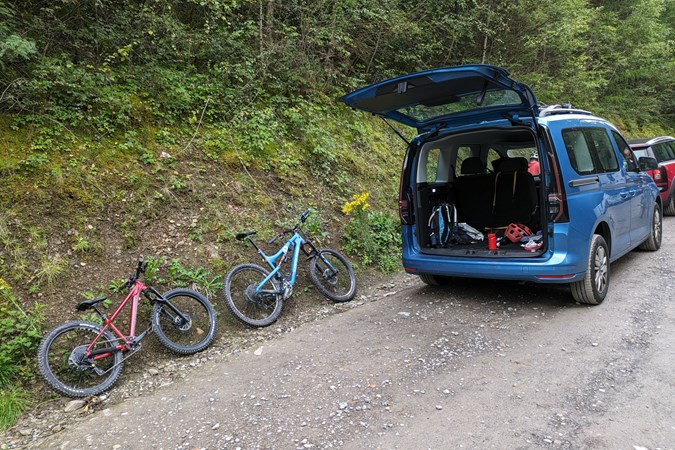
And all that tallness made it a bit tricky to load mountain bikes on the roof – admittedly a niche complaint, but the same would go for a roofbox or anything else you want to carry externally. If I could fit them inside the car (like in the Transporter) it wouldn’t be such an issue. But once you’ve got used to a feature like that it’s hard to go back.
So to answer the original question then, it depends what you need it for whether the Caddy is better than the Transporter. For me I think the Transporter Kombi was just a little bit more flexible and capacious, outweighing the downsides of its exterior volume. Take the bikes away from the equation though and the picture gets much clearer.
I’m sure I’ve used the burger analogy to describe cars before – some are the ingredients in the middle, the main event, the thing you turn up for, and others are the bun. Not necessarily the bit you remember about the meal but essential in delivering the good stuff, and without which it would all fall apart.
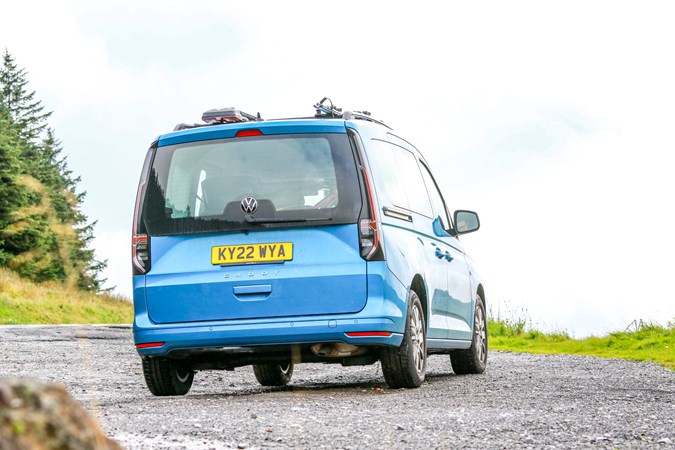
The Caddy Life is about the most solid bun car I’ve ever owned – it slotted into our life and just quietly got on with the job without making a big song and dance about it.
Granted it wasn’t the most exciting thing in the world, but I’m not at a point in life where I need that, and it enabled us to do plenty of exciting things as a family. And really what more can you ask than that?
Goodbye Caddy, you’ll be sorely missed.
| Current mileage | 12,404 |
| Real-world average fuel economy | 35.7mpg |
| Official combined fuel economy (WLTP figures) | 39.8-42.2mpg |
| Parkers ‘MPP’ (Miles Per Pound) calculation | 5.8-6.5mpp |
| Car joined Parkers fleet | March 2023 |



